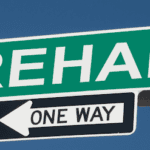Did you know that Congress has created a COVID 19 relief bill helping small businesses with their taxes and paychecks?
During the coronavirus pandemic, many businesses lost great amounts of revenue. The lockdowns, economic downturn, and resulting job loss put a lot of strain on many companies, especially small ones. It led to a drop in profits, which forced many businesses to close their doors, often permanently.
For smaller companies desperate for relief, news of the COVID 19 relief bill seemed like an oasis in the middle of a desert. Now that the bill is here, however, what does it include? How will it help you and your business?
Below, we go into everything you need to know about the new bill, including its COVID tax support and the extension of the paycheck protection program. Keep reading to learn more!
The Basics of the COVID 19 Relief Bill
So, what does the COVID 19 relief bill include?
Congress created the bill as an attempt to give the American people a chance to revive their businesses, pay for their rent and utilities, and cover other necessary expenses. It also aims to stimulate the economy, providing increased income for companies.
The bill assists both smaller companies and individuals with their taxes and seeks to put some money back into pockets. In the most recent relief bill, individuals received up to $600 in direct payments, with the exact amount depending on their 2019 tax filings. Small businesses received loans and tax support.
The Impact on Small Businesses
So, what does this mean for you and your small business?
The relief granted to you and your company is two-pronged. First, you have the opportunity to take advantage of tax relief efforts, and you also might be able to receive loans.
Paycheck Protection Program (PPP) Extention
For businesses looking to keep their operations going and reduce the risk of going under due to the pandemic, the paycheck protection program offers you an excellent opportunity.
Congress has placed $325 billion away in small business funds. $284.5 billion has been allocated to small business loans. So far, businesses can apply for first and second PPP loans, according to the bill.
PPP was put into place earlier in 2020, and previously, only the first loan was available. This update expands the PPP assistance for small businesses.
The first loans (known as First Draw PPP loans). It has opened as of the week of Jan. 11, 2021. Small businesses with 500 employees or fewer may apply for this loan, with some exceptions for companies in food, accommodations, or news. These companies must have 500 or fewer employees at each location.
People apply for a First Draw PPP loan until March 31, 2021.
In terms of Second Draw PPP loans, organizations must have 300 employees or fewer, with the exception of the fields mentioned above. You must also have received a First Draw PPP loan, only used it for authorized purposes, and can demonstrate a 25% financial decrease between the same quarters in 2019 and 2020.
The Second Draw loans can be 2.5 times your payroll expenses, up to $2 million.
What Can You Use Your Loan For?
When you get a PPP loan, you can use it for a variety of necessities.
This includes payroll payments, including the cost of benefits. It also covers utilities and rent for your office, COVID-19 worker protection, mortgage interest, and property damage due to looting and vandalism.
Worried About Loan Costs?
As you know, most loans eventually need to be paid back. If you’re in tough financial straits, you may be hesitant to go thousands of dollars in debt.
Fortunately, the government has put a loan forgiveness program into place. To qualify, you must have maintained your compensation levels for employees, spent your loan on only approved categories, and spent at least 60% of your loan amount on payroll.
The loan forgiveness application has also been simplified for people who have received loans amounting to $150,000 or less.
Tax Relief
But what about your taxes?
If you’ve been hit hard by COVID-19, you can’t afford to spend any more money on taxes than absolutely necessary. The CARES Act forbade PPP loans from being part of taxable income.
It didn’t, though, elaborate on whether or not the expenses businesses use the PPP loans for are tax deductible. This current iteration of tax relief further clarified that small businesses can deduct the expenses they spent their PPP loans on in their tax filings.
This should come as a relief to you. If you qualify for the loan, you can use it for a wide variety of purposes that will help your business survive these difficult times. You might also qualify for loan forgiveness, meaning you might not have to pay back what you’re granted. It will also give you the ability to deduct more from your overall taxes, saving you money.
Because of this, the PPP extension has been one of the most positive advances in the COVID relief bill.
Want more tax relief help? Check out Capital Allowances.
Personal Stimulus Checks
Individuals also received money from the government through the new relief bill. As mentioned above, many American citizens received up to $600 in direct payments.
This has helped many people give their small businesses an extra boost, as they are allowed to spend it on whatever they please. So, if you received a check and haven’t spent it yet, consider putting part of it into your company.
Ready to Get Relief?
If you’re a small business, you’re probably eager to get help for your company.
The COVID 19 relief bill is here to help. With PPP loans and the resulting COVID tax support, you can get the assistance you need. This will help your business go through the challenging economic times the United States faces.
Want some more financial help for your business? We provide top-notch articles that help companies navigate their finances. Read more on our website today!









